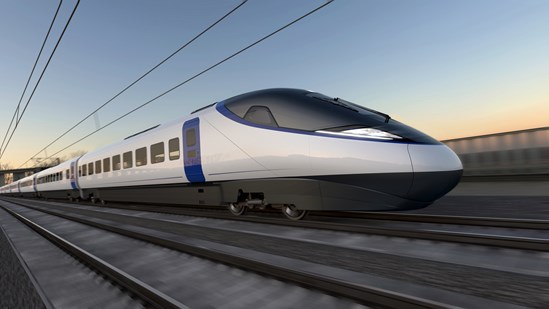Thousands of homes and businesses near HS2 could benefit from faster broadband thanks to a project that will see spare data capacity sold to broadband providers.
The new railway – which will link London and Birmingham – runs through largely rural areas of Buckinghamshire, West Northants, Warwickshire and Staffordshire, many of which lag behind the rest of the UK in terms of data speed and mobile coverage.
This is because of the high cost of installing the direct fibre connections needed for the highest broadband speeds in comparison to the small number of potential customers in some rural areas.
Under the plans, HS2 would sell mobile and broadband providers access to spare capacity in the fibreoptic cabling and telecoms masts being built to support the railway’s signalling and telecoms. Because most of the cost of cabling is installation, this could dramatically reduce the cost of bringing direct fibre connections to less populated areas.
The scale of the opportunity is underlined in a new analysis of the latest Ofcom data commissioned by HS2 which has identified more than 538 postcodes within 5km of the HS2 route that currently do not have access to ‘Ultrafast’ speeds of more than 100Mbit/s.
That includes 209 postcodes that currently don’t even have access to ‘decent’ broadband speeds – considered to be at least 10Mbit/s.
While the railway is expected to open between 2029 and 2033, telecoms companies could get access to masts and fibreoptic cabling two years before the railway opens – during the testing and commissioning phase.
Rail Minister Lord Hendy said:
“Investment in our transport infrastructure can boost opportunities and drive economic growth in every part of our country.
“This scheme will have a positive impact on local areas for generations to come, providing connectivity that will create new opportunities for people and businesses to thrive.”
Construction of HS2 – which will improve journeys and free up space on the west coast mainline into Euston for more local services - is now well underway, with key railway systems contracts set to be awarded later this year.
As part of this next stage of construction, around 80 telecoms masts will be built alongside the railway to provide signalling for the trains which will travel at speeds of up to 360km/h.
These masts could also be used to boost local mobile coverage, with 15 postcodes along the route currently unable to receive a reliable 5g signal.
The initiative is designed to complement the government’s push to improve rural broadband including the £3.8m England’s Connected Heartland project which involves a similar project to introduce 5G technology along the new East-West Rail route between Oxford and Milton Keynes.
Around 2,000 km of fibreoptic cabling will run alongside the railway, with the telecoms masts each located in a small, dedicated compound. From a third-party perspective, this makes the network much more secure than cable buried under public roads and makes it much easier to access for maintenance and future upgrades.
Tim Ward, HS2 Ltd’s Head of Telecoms Engineering, said:
“HS2 provide fast, efficient and reliable rail journeys between Britain’s two largest cities while freeing up space on the existing mainline for more local trains. But we’re also determined to ensure that we get the most value out of our new infrastructure and support the local community wherever possible.
“That’s why we’re keen to work with mobile and broadband providers to help unlock better 5G connectivity and faster broadband for communities in more isolated areas along the railway.”
Passengers would also benefit from seamless mobile connectivity throughout the project’s tunnels and cuttings thanks to a step change in technology aboard the new trains.
Mobile devices get their data from each telecoms mast the train passes – jumping from one to another in quick succession – which often leads to reduced bandwidth and occasional drop-outs. On HS2 services, the data can also be fed directly to the train, which will then link onward to passenger’s phones, dramatically improving the quality of the connection.


